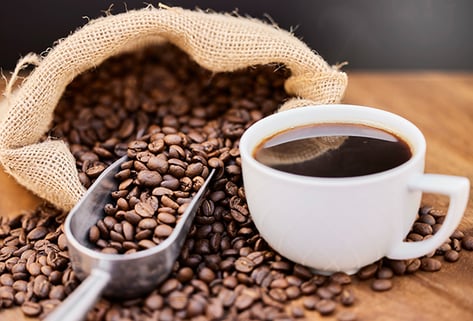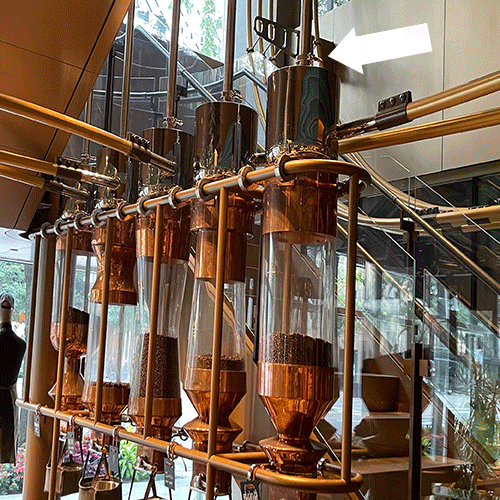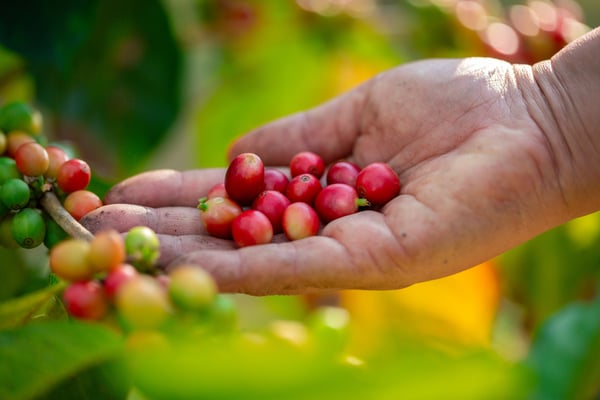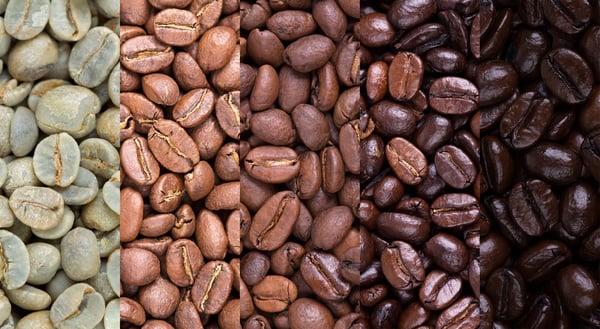
Cappuccino, espresso, latte, macchiato, cold brew, iced, or traditional hot, today’s coffee options are as diverse as the people consuming them. More than just a morning ritual, coffee is a global obsession, energizing the world for more than a thousand years.
History of Coffee
It all began—at least in legend—with a goat. A pleasant and persistent myth maintains that over 1,000 years ago, an Ethiopian goatherd named Kaldi spied his usually listless herd chewing on little red berries and cavorting like kids. Curious about the source of this manic behavior, he plucked a few coffee cherries himself, chewed them, and thereby got the first java jolt in human history.
In 17th-century London, coffee was hailed as a simple, innocent drink, but King Charles II saw the coffeehouses as a breeding ground for sedition and ordered them shut down. The royal prohibition was shouted down by the wide-awake masses and never took effect.
Across the Atlantic, popular history holds that the anti-British anger that culminated in the Boston Tea Party flipped colonists’ taste from tea to coffee. This belief has at least some basis in fact, as witnessed by a famous letter written by Founding Father John Adams to his wife, Abigail, in 1774: “Tea must be universally renounced. I must be weaned, and the sooner, the better.”
During the Civil War, soldiers on both sides roasted their own beans over bivouac campfires and brewed their coffee in the same pots that they used to wash their laundry. (But the boiling of putrid pond and river water undoubtedly saved lives.) Then came a wave of innovations in vacuum-sealed preservation, industrial-scale processing, dehydrated “instant” coffee, decaffeination, supermarket branding, and mass marketing that has never ended.
In 1958, a brilliant advertising campaign for coffee from the Colombian highlands made a fictional farmer named Juan Valdez and his trusty mule an icon of quality and launched a craze for country-of-origin roasts. By the time a Dutch immigrant named Alfred Peet opened his first café in Berkeley, California, in 1966 and offered a darker, richer brew, North America was ripe for turning coffee from a cup of dishwater at the local diner into a multisensory experience of connoisseurship and taste. The rest, as they say, is history.
 Dixon’s sanitary clamps in Downtown Chicago’s Reserve Roastery
Dixon’s sanitary clamps in Downtown Chicago’s Reserve Roastery
Coffee Production
All coffee is grown in a region found between the Tropics of Cancer and Capricorn, otherwise known as “The Bean Belt.” Clusters of red “cherries” are harvested, usually by hand, at peak ripeness. The cherries are dried in the sun until the outer husks shrivel. Then, the inner beans are separated from the husks by hand or by machine. Alternatively, the cherries are washed and left to ferment for 18-35 hours, then rinsed, dried in the sun or in ovens, and mechanically hulled, a process that removes the glutinous mucilage and the thin outer parchment.
 Hand harvesting ripe coffee “cherries”; Photo courtesy of iStock, Thai Noipho
Hand harvesting ripe coffee “cherries”; Photo courtesy of iStock, Thai Noipho
Next, the beans are sorted on conveyor belts for consistency and size. The sorted “green” beans are bagged in sacks made from jute fibers, with about 132-154 lbs (60-70 kg) of beans to each bag.
The sacks are trucked to port and loaded into containers for export, and the containers are shipped to the destination country or region. The containers are imported and trucked to a wholesale importer’s warehouse, or to the roasting plants of large coffeehouse and supermarket companies.
Samples of each sack are selected, roasted in small batches, brewed, and cupped by experts to determine quality, profile, and tasting notes. Sacks of select varieties are purchased by cafés, manufacturers, and retailers.
The beans are roasted to approximately 440°F (225°C) by a forced-hot-air process in industrial-sized cylinders; in smaller roasters in cafés, restaurants, and specialty markets; or at home in a frying pan. The beans can also be decaffeinated by treatment with methylene chloride or by steaming them until the caffeine rises to the surface.
 Coffee beans at various stages of roasting from raw through Italian roast; Photo courtesy of iStock, Rixipix
Coffee beans at various stages of roasting from raw through Italian roast; Photo courtesy of iStock, Rixipix
The roasted beans are cooled in vats exposed to cold air. Then, the cooled beans are ground in-store, at home, at a café, or in large-scale manufacturing facilities, then packaged in bags or cans for retail sale.
Finally, the ground coffee is brewed and enjoyed.

Coffee by the Numbers
Loved around the world, coffee has become an essential component of global culture, with 2.25 billion cups consumed every day worldwide. Northern Europeans are the world champions of coffee drinking; the colder the climate and the longer the winter nights, apparently, the greater the demand for a jolt of steaming joe.
The world’s biggest coffee drinkers in pounds per person per year are:
- Finland: 26.5
- Norway: 21.8
- Iceland: 19.8
- Denmark: 19.2
- Netherlands: 18.5
- Sweden: 18.0
- Switzerland: 17.4
- Belgium: 14.9
- Luxembourg: 14.0
- Canada: 13.7
Coffee is grown in 80 countries, and many nations see it as a major export and the means to the favorable “branding” of an entire country on the basis of a dime-sized bean. Its price can fluctuate dramatically according to each sack’s country and region of origin, the speculative whims of investors who purchase and hedge futures contracts months in advance, and the unpredictable nature of weather.

Coffee production by country; Source: USDA Foreign Agricultural Service, Coffee: World Markets and Trade
The world’s top producers of coffee are:
- Brazil: 3.88 billion kg
- Vietnam: 1.74 billion kg
- Colombia: 792 million kg
- Indonesia: 642 million kg
- Ethiopia: 637.8 million kg
Dixon Products for Coffee Manufacturing
Dixon manufactures and supplies a variety of fittings, valves, and pumps to support coffee manufacturing.
BV2-Series Sanitary Ball Valve (Encapsulated and Non-Encapsulated)
Sizes
- 1/2” to 4”
Features
- Live-loaded stem packing
- Precision stainless steel balls reduce torque and friction losses while extending seat life
- Integral ISO 5211 mounting pad
Specifications
- Operating temperature: -20°F to 450°F (-29°C to 232°C)
- Maximum pressure:
- 1/2” to 2”: 1000 PSI WOG
- 2-1/2” to 4”: 800 PSI WOG
Dixon Cam & Groove
Type A, Type B, Type C, Type D, Type E, Type F, Type DC, Type DP
Features
- Precision machined to rigid tolerances
- Durable stainless steel cam arm pins will not rust or bind, providing greater strength and safety
- Recess holds gasket firmly in place - ensures proper placement
- King Crimp shank design as well as traditional shank design for banding is available
Sizes
- 1-1/2” - 4” x 1-1/2” - 6” inlet
Features
- Casing is stamped, not cast, for lighter weight and less porosity
- Cageless guard design
- BC-series features impeller retainer
- BP-series features threaded impeller nut
Specifications
- Nominal capacity: up to 1200 GPM
- Temperature range: 32°F to 212°F (0°C to 100°C)
- 100% CIP-able
Read our blog post, Sanitary Pumps: An Overview, to learn more.
Single Pin Heavy Duty Clamp with Cross Hole Wing Nut
- 1/2” to 8” tube O.D.
Specification
- Wing nut tightened to 25 in-lbs of torque
Sizes
- 1-1/2”, 2”, 3”, and 4”
Features
- Consistent, controlled compression of the gasket with every use
- Adjustable for both rubber and PTFE gasket styles
- Fast installation, no torquing tools required
Specifications
- Pressure rating:
- 1-1/2”: 500 PSI at 70°F (21°C)
- 2”: 450 PSI at 70°F (21°C)
- 3”: 350 PSI at 70°F (21°C)
- 4”: 300 PSI at 70°F (21°C)
Looking for a different type of clamp? We help you make The Right Connection® in Hose Clamps 101.
Features
- FDA Title 21 compliant
- Cartridge options: melt blown, high efficiency pleated, carbon block, and polyether sulfone
Specifications
- Micron ratings:
- DF-MB-Series: 1, 5, 10, 20, 25, 30, 50, 75, and 100
- DF-PHE-Series: 0.2, 0.45, 1, 3, 5, 10, 25, and 50
- DF-CB-Series: 1, 3, 5, and 10
- DF-PES-Series: 0.1, 0.22, 0.45, 0.6, 0.8, 1.2, and 5
Filter through the details here: Filters and the Purification Process.
Sizes
- 1-1/2” to 3”
Features
- Replaceable seat
- PTFE ball standard
- Vertical or horizontal installation orientation
Specifications
- Maximum pressure: 150 PSI (10 bar)
- Operating temperature: 15°F to 200°F (-9°C to 93°C)
Sizes
- 1”, 1-1/2”, 2”, 2-1/2”, 3”, and 4”
Features
- Available with a pneumatic actuator or manual handle
- Burkert™ control top model numbers 8691 and 8692 are available
Specifications
- Maximum temperature:
- Operating: 266°F (130°C)
- Sterilization (20 minutes maximum): 275°F (135°C)
- Ambient: 140°F (60°C)
- Control air pressure:
- Spring return maximum pressure: 80 PSI (5.5 bar)
- Double acting maximum pressure: 45 PSI (3.1 bar)
- Maximum temperature: 176°F (80°C)
Dixon’s sanitary and industrial valves can be actuated. Check out our blog post, The Art of Actuation, to learn more.
Summary
A millennium after a lucky goat happened upon a cherry with a kick, coffee has transformed from a simple hot beverage to an array of flavors and forms for daily comfort and caffeine. As a U.S. manufacturer and supplier, Dixon blends high-quality products with innovative solutions and exceptional customer service for a better brew. To learn more about Dixon’s connections for the coffee market, visit dixonvalve.com or call 877.963.4966.










